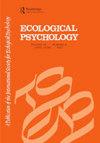生态心理学与生态学:蜜蜂是感知-行动、社会动态和人为因素的模型
IF 1.7
3区 心理学
Q3 PSYCHOLOGY, EXPERIMENTAL
引用次数: 0
摘要
摘要以往关于社会动力学的生态学研究主要是对人类二元体进行的;然而,为了支持休谟的试金石,生态心理学家还必须研究非人类的感知行动和集体行动能力。这种方法使我们能够通过探索具有一系列能力的生物体之间的社会动力学来规避对复杂社会现象可能的认知主义解释。在这里,我们概述了生态学和生态心理学的结合将如何有利于生态学理论(即,通过为大规模的人类集体协调提供信息),以及我们设计协作人类群体的方式。为了证明这一研究途径的好处,我们详细介绍了西方蜜蜂Apis mellifera经过充分研究的通信系统,并强调了它们通信信号的上下文敏感性和特异性。我们讨论了蜜蜂的两种集体社会现象——群集和任务分配——以及它们的研究如何为人类的人际动态提供信息。为了利用昆虫作为改善人类群体协调的基础,我们建议,我们不仅必须确定一种合适的昆虫,还必须确定一个在变异性的关键维度上具有相同价值的特定现象。最后,我们提供了这一学科交叉授粉的潜在现实意义。本文章由计算机程序翻译,如有差异,请以英文原文为准。
Ecological Psychology Meets Ecology: Apis mellifera as a Model for Perception-Action, Social Dynamics, and Human Factors
Abstract Previous ecological research on social dynamics has largely been conducted on human dyads; however, to provide support for Hume's touchstone, ecological psychologists must also investigate the perception-action and collective action capabilities of non-humans. This approach allows us to circumvent possible cognitivist interpretations of complex social phenomena by exploring social dynamics across organisms with a range of abilities. Here, we outline how the integration of ecology and ecological psychology will benefit ecological theory (i.e., by informing large scale human collective coordination) and the way we engineer collaborative human groups. To demonstrate the benefits of this avenue of research, we detail the well-studied communication system of the western honey bee, Apis mellifera, and highlight the context-sensitivity and specificity of their communicative signals. We discuss two collective social phenomena in bees—swarming and task allocation—and how their study can inform human interpersonal dynamics. In order to use insects as a basis for improving human group coordination, we suggest that we must not only identify a suitable insect but also a particular phenomenon that shares the same values along critical dimensions of variability. We end by providing potential real-world implications of this disciplinary cross-pollination.
求助全文
通过发布文献求助,成功后即可免费获取论文全文。
去求助
来源期刊

Ecological Psychology
PSYCHOLOGY, EXPERIMENTAL-
CiteScore
3.30
自引率
10.50%
发文量
8
期刊介绍:
This unique journal publishes original articles that contribute to the understanding of psychological and behavioral processes as they occur within the ecological constraints of animal-environment systems. It focuses on problems of perception, action, cognition, communication, learning, development, and evolution in all species, to the extent that those problems derive from a consideration of whole animal-environment systems, rather than animals or their environments in isolation from each other. Significant contributions may come from such diverse fields as human experimental psychology, developmental/social psychology, animal behavior, human factors, fine arts, communication, computer science, philosophy, physical education and therapy, speech and hearing, and vision research.
 求助内容:
求助内容: 应助结果提醒方式:
应助结果提醒方式:


